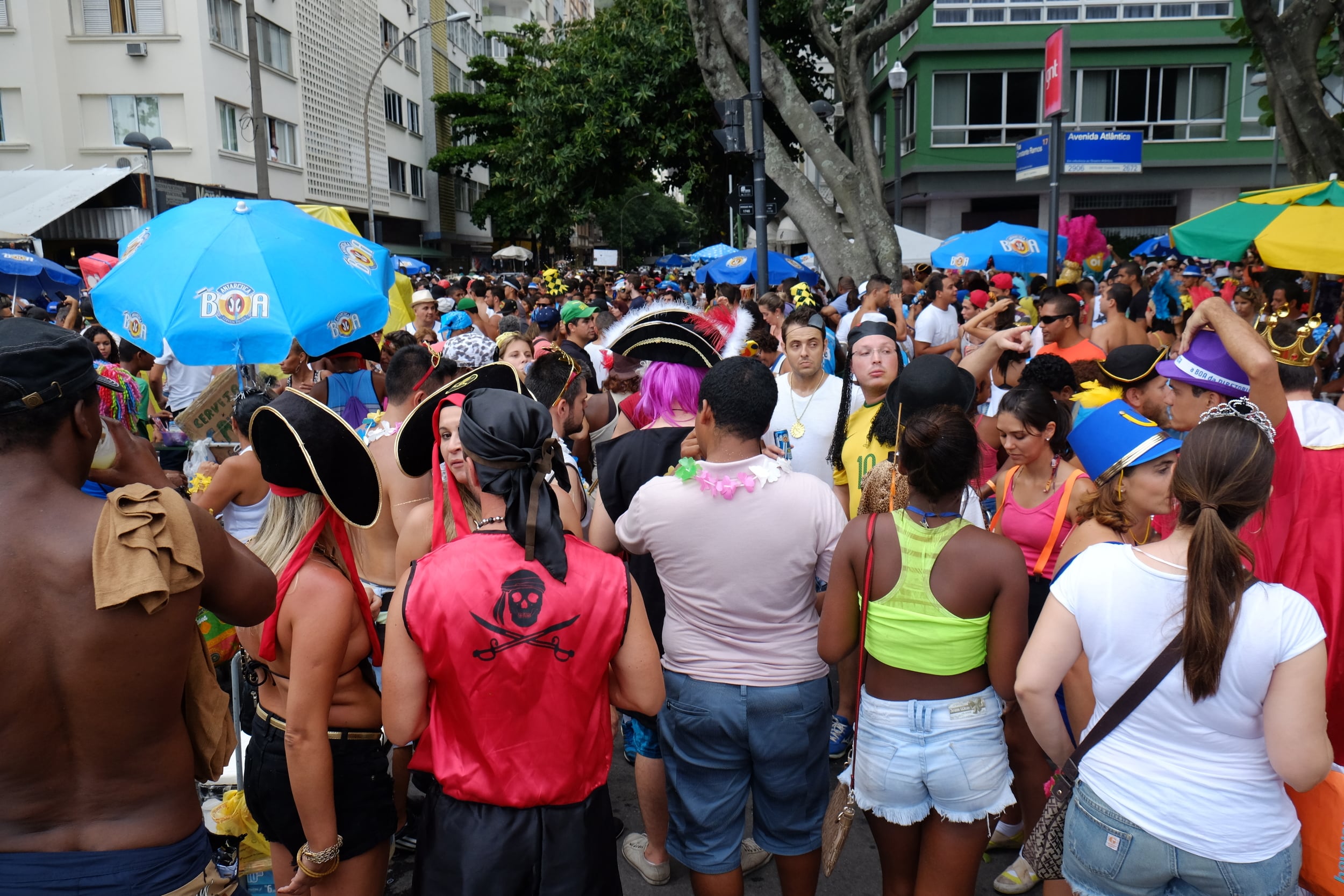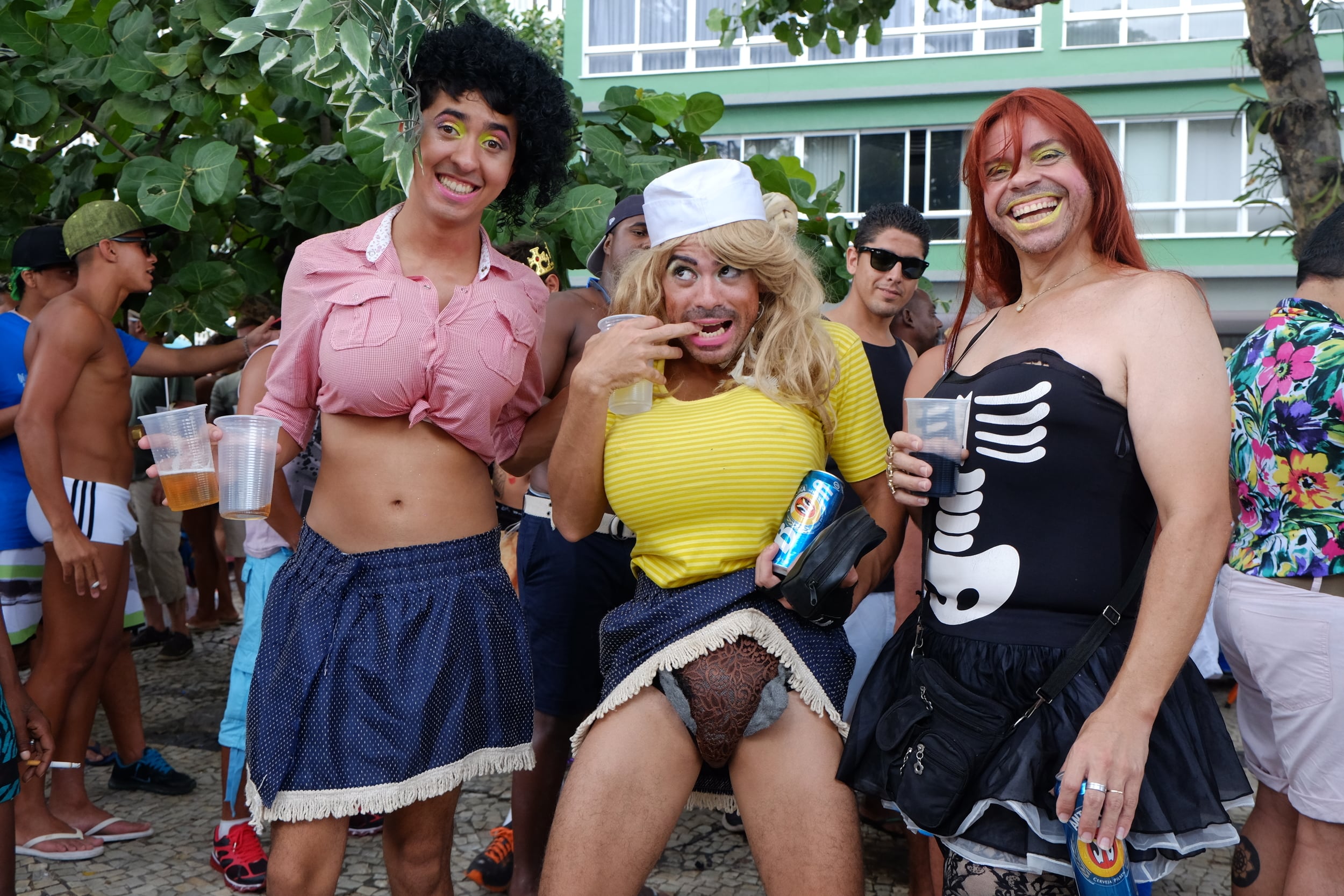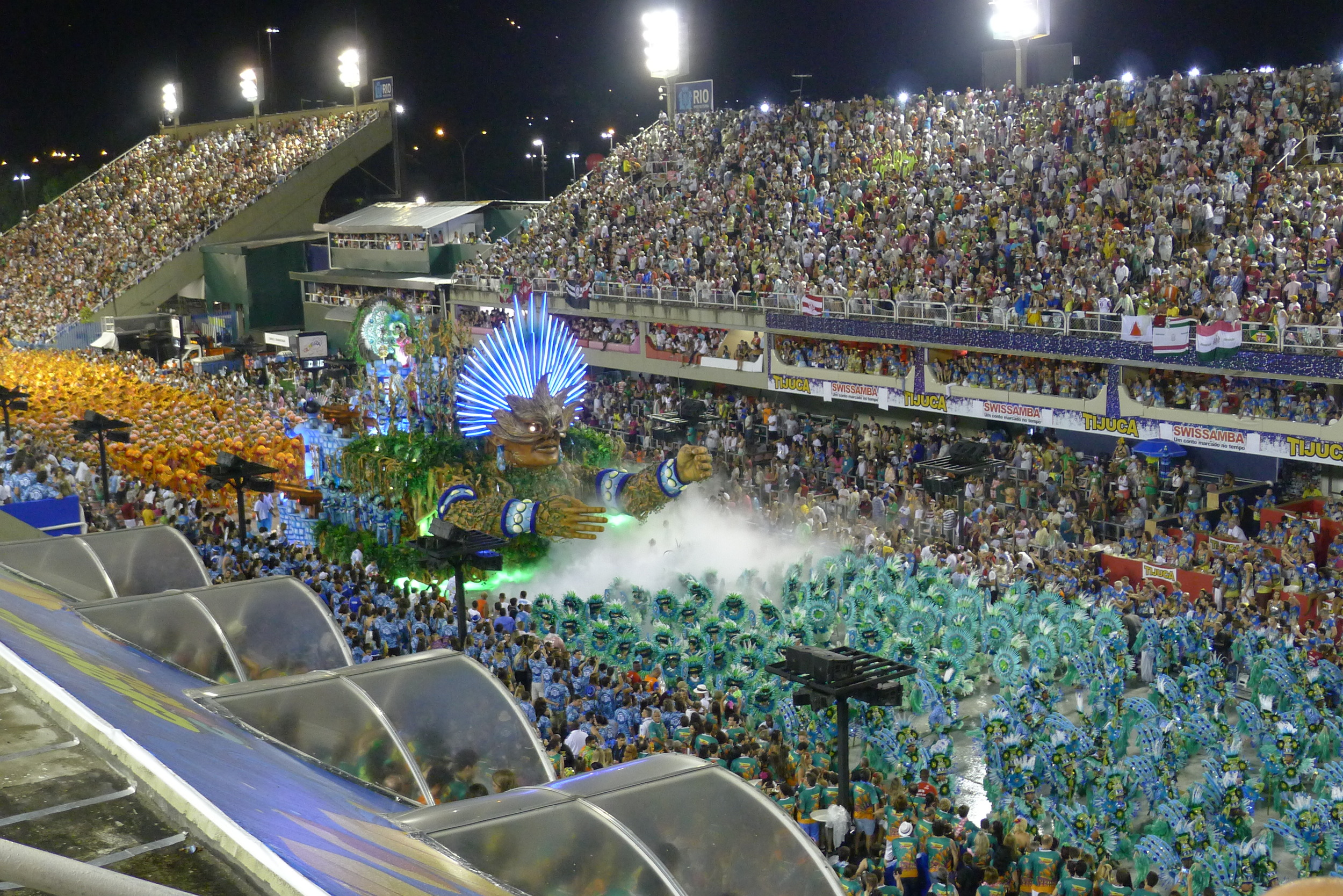We were already 2 months into our voyage through South America and figured we'd end on a high note by sambaing our way to the next part of our journey. It was magical. It was sensational. It was hysterical. It was prodigal. It was...CARNAVAL. There's really no introduction necessary, just some quick helpful tips if you're going to be joining in on the debauchery fest of a lifetime. And, sure, many cities throughout the world take part in these hedonistic celebrations, but we'd be willing to bet that nobody does it quite like Rio.
If you don't already know by now how you're getting here, be prepared to cough up some dough because, frankly, it ain't cheap. We flew in from Buenos Aires, which would've easily cost upwards of $600 per ticket (one-way) had we not leveraged the frequent flyer miles we'd been saving for a rainy day. And, boy, did it rain.
LODGING
There are so many options to choose from. During these festivities, prices are so inflated that even hostels end up costing a small fortune. Book in advance is the obvious advice here, but, also, don't be afraid to check out hotel options, especially if you're traveling in multiples. You'd be surprised to find that the difference in rate between 2 dorm beds and a double ensuite might actually be quite nominal.
Personally, we wanted to ensure our safety and privacy and thought we'd save some money by staying across the bay at the H Hotel in Niterói. The amenities were top-notch and a real treat to come back to after a sweltering day of non-stop partying, but the problem was its location. Getting to the hot spots took at least an hour, depending on time of day, and though a cab would have cut down on travel time, once cost was factored in, we might as well have paid a little extra to stay closer to the city center, which is what we ended up doing. Being in Rio meant we had to compromise on quality to keep it affordable, but it turned out to be a good trade-off since it also allowed us to take breaks in between activities.
In terms of neighborhood, you can't really go wrong anywhere. There are blocos just about everywhere. Proximity to a metro or bus station is highly recommended because you could count on cabs being in high demand and, therefore, costly. Generally speaking, if you're somewhere along the Flamengo-Botafogo-Copacabana stretch, you're money.
TRANSPORTATION
An easy and reliable mode of transportation is the MetrôRio. We took it back and forth to the Sambódromo with no issues, making sure to avoid stations that seemed empty. It's got just 2 lines, which means the areas it services are limited, but where it doesn't go, there's the bus.
As long as you know which line to take and where to get on and off, the bus is great and affordable. GoogleMaps does a decent job of showing the way. The only setback is that the bus schedules are wacky due to road blockages, whether city-enforced or crowd-induced, so it's not unlikely that the wait and then the ride could take longer than planned. It took an hour for our bus to move through just one block one night. When we realized it was headed in the opposite direction of where we wanted to go, we had to endure another hour going through that same block again. If you're not in a hurry, it's not a problem, especially since people watching from the bus is quite entertaining.
If you manage to catch a cab, negotiate a price before hopping in. For a ride to the airport, we'd recommend arranging a car ahead of time through your hotel. Because they take into consideration road blockages and traffic and time of day, they generally have a good idea of how early on you should leave to make your flight.
Walking seems impractical, but, in fact, in some ways it's faster and better. Doing so, we randomly came upon different blocos we hadn't intended on going to and were able to take in the scene in a less deliberate, more spontaneous way. It certainly helped to process some of that alcohol.
BLOCOS
There are hundreds of street bands, parties, and carnivals going on throughout the city from the weeks leading up to Carnaval itself and even after. The best thing about them is that they're free. Everybody is dressed in ridiculous costumes, throwing back beers and cocktails, probably smoking a joint or 4, partying from dawn 'til dusk, then dusk 'til dawn. It literally is non-stop and quite impressive how hard some people could party. WikiRio has a schedule of all the blocos going on. RCS also has a more curated list under the "Street Bands" section.
SAMBÓDROMO
The Sambódromo is a must. You're guaranteed to be blown away. The artistry and creativity, the energy and spirit, the music and dance. EVERYTHING is SPECTACULAR. It's simply unparalleled. The attention and detail that goes into each performance is incredible and because these are Samba schools competing against each other, the troupes try to outperform one another in every aspect. It's so fun to watch and experience. Keep in mind that the event doesn't begin until after 9 pm and though it's supposed to end around 3 or 4 am, you're realistically looking at 5 or 6 am. Prepare yourself for late night chills and munchies.
It's advised to purchase tickets in advance as they tend to get quite expensive (3-4 times) closer to parade time - trust us, we know. Rio Carnival Services (RCS) is a popular site that's well organized and professionally run. There are many ticket options to choose from (preliminary versus main, grandstand versus [assigned] seats, parade versus ball, etc.), so make sure you know what you're getting yourself into. For the parade, this FAQ page does a great job of explaining what each sector offers. We got tickets to the Main Parade and sat in Sector 4 of the Grandstands, which are basically huge concrete steps. Seats are on a first-come, first-serve basis (think general admission by sector), so while our view was great, it could've been better had we arrived earlier and sat closer to the railing. The Main Parade features the "Special Groups", which are more seasoned, more dynamic, and more vibrant than the preliminary ones. They are the ones you want to see. Choose Saturday or Sunday to go.
RCS has a bunch of helpful info on logistics, including recommendations on how to get there and what to take. Our suggestions: take the metro and bring small snacks, water, a rain jacket, some cash, and your camera. Easy, breezy. For a little more comfort, bring something soft to sit on.
By the way, we didn't know this when we were there, but the samba schools have dance halls that are open to the public on weekends beginning in November where anyone could join in on the party. RCS provides more info here under "Samba Nights at the Schools".
SAFETY
Common sense goes a long way.
Don't get off the beaten path. If you're starting to head into an area where there's just a small trickle of people, it's probably a good idea to turn around and go back to where you came from. Not all quiet areas are dangerous, but better to be safe than sorry.
Be vigilant. A little easier said than done if you've been chugging alcohol all night, but if you look vulnerable, you are vulnerable.
Leave valuables behind. Don't invite trouble by wearing jewelry or carrying big cameras. Seasoned veterans keep a low profile by bringing just the bare essentials - cash, and maybe phone - and tucking them into the folds of their scanty outfits where they could always feel and keep an eye on them.
Stay hydrated. Aside from the alcohol consumption, the crowds, the dancing, and the heat will all get the best of you. Remember to nurture your body with some good ol' H2O. You'll be thankful later.
All right, all that's left now is your costume. Slip something on (or off) from vendors all around town and let's get ready to samba! Happy, happy Carnaval!













